 Facebook
Facebook
 X
X
 Instagram
Instagram
 TikTok
TikTok
 Youtube
Youtube
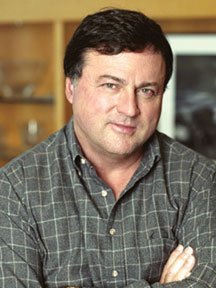
Dean Spanos and hired gun Mark Fabiani may be finally headed for L.A., but whether the Chargers go or not, plans to use public money to build a new stadium here for them, the Oakland Raiders, or other would-be taxpayer-subsidy recipients must by law go before voters, an expensively problematic hurdle for those demanding any new city-bankrolled team.
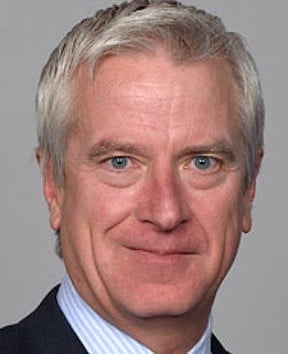
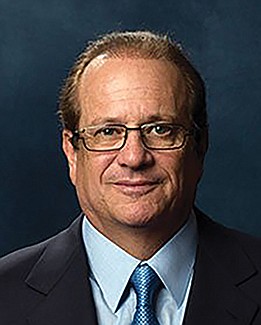
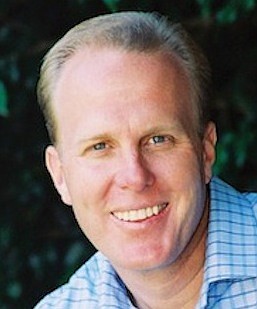
The requirement, enshrined in the city charter, could turn out to be a deal-killer in future negotiations by politically ambitious mayor Kevin Faulconer for a replacement NFL team, some assert.
Throughout the long Chargers-departure saga, Faulconer and his political team have portrayed his plan for a public vote on any new Chargers stadium as a personal pledge.
"This is my commitment: For the first time, this year, we will have a real plan to consider for a new stadium," said the mayor in his 2015 State of the City speech.
"This is San Diego’s team and San Diegans will have the final say with a public vote."
The Union-Tribune picked up the theme in a June 14 report on the mayor's Chargers plan: "While it’s possible for a stadium to be built without a public vote, Faulconer has repeatedly said that’s a bad idea for two main reasons: A vote could prevent a referendum from slowing the project down, and voters deserve to weigh in on a major proposal involving taxpayer contributions."
In reality, the requirement for voter approval of big city subsidies for private projects was adopted by city voters and incorporated into the city’s charter almost 18 years ago, thereby limiting the ability of local politicos to wheel and deal with potential subsidy seekers from the National Football League or other professional sports organizations.
Supposedly gone are optional "advisory votes" on major subsidy projects for private parties that leave key financing details up to city politicos to decide at a later date. Theoretically at least, 1998's Proposition E amendment to the city charter would force city officials to lay all of their cards on the table.
Appearing on the same November 1998 ballot as Proposition C, the measure that green-lighted public money for the downtown Padres ballpark, Prop E received much less attention.
It was spawned by the controversy surrounding the city's 1995 expansion deal for the Chargers of what was then called Jack Murphy Stadium and a successful referendum drive that ultimately forced the city council to pull $18 million in public funding from the project.

After that debacle, San Diego’s then-mayor Susan Golding, who aspired to a national political career, set up a task force to contain the political damage.
Reported the Union-Tribune in October 1997: "The purpose of the Voter Rights Task Force 'is to clearly examine what major public facilities ought to go to a vote of the people,' she said. In February, Golding — in an effort to cool down the firestorm over the Chargers deal — suggested that the city put on the ballot the construction of all future city buildings costing $50 million or more.”
Added the U-T, “Her suggestion did nothing to resolve the dispute over the Chargers deal. But that proposal will be among the suggestions the Voter Rights Task Force will review, the mayor said."
Noted the paper a year later in October 1998, as the resulting ballot measure headed for a vote of the people:
"Proposition E would require voter approval on projects with a price tag that equals 10 percent or more of the general fund when the project would be used for private benefit for 10 percent or more of the time it is open. With a 1999 fiscal year general fund of $576.5 million, the threshold for voter approval this year under Proposition E would be about $57.6 million."
"This measure will ensure that any new major public project, which could provide a significant benefit to a private party or group, first have the approval of a majority of San Diego City voters,” wrote Golding in the ballot argument favoring Prop E.
"If you believe that in the future, voters of San Diego should have a direct say in approving public participation on certain major projects which could confer significant benefit to a private party — then support this measure."
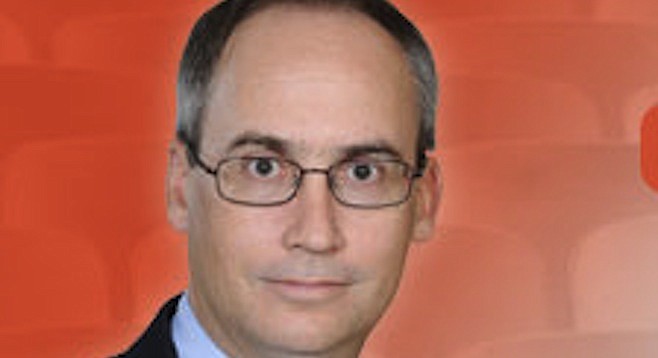
Opponents, including then–San Diego County Taxpayers Association executive director Scott Barnett, argued that the measure was "a poorly drafted, simplistic solution to an important city issue," adding, "If Proposition E were in place, important projects such as Horton Plaza may never have been built."
The measure was approved by voters on November 3, 1998, passing with a lopsided 66 to 34 percent.
There are some loopholes in what thus became section 90.3 of the city charter regarding what constitutes city money, and nowhere in the section’s verbiage is an explicit requirement to place the actual verbatim subsidy agreement before voters.
"The term “City funds” means funds authorized to be spent pursuant to an appropriation in the city’s annual budget and derived through any type of financing mechanism, including cash, loans, revenue bonds, lease revenue bonds or certificates of participation," says the section.
"But not including funds generated by a financing mechanism in which the City acts solely as a conduit, and where all costs and financial risks associated with the financing, development and construction are the responsibility of individuals or entities other than the City."
In addition, "The term 'identifiable private individuals or entities' means those individuals or entities which can be clearly identified, prior to the development of a project, as the party or parties who will ultimately use, rent, lease, or operate the facility for their own benefit."
The wording appears vague enough, in the eye of some, to allow future politicos, advised by clever lawyers, to slip questionable deals past voters without spelling out the true costs to taxpayers.
Still, the mere requirement to put something on the ballot could scare off would-be Chargers replacements, including the Oakland Raiders, as well as throw cold water on potential plans by ex-Padres owner John Moores to get taxpayers tofinance a professional soccer stadium here.


Dean Spanos and hired gun Mark Fabiani may be finally headed for L.A., but whether the Chargers go or not, plans to use public money to build a new stadium here for them, the Oakland Raiders, or other would-be taxpayer-subsidy recipients must by law go before voters, an expensively problematic hurdle for those demanding any new city-bankrolled team.



The requirement, enshrined in the city charter, could turn out to be a deal-killer in future negotiations by politically ambitious mayor Kevin Faulconer for a replacement NFL team, some assert.
Throughout the long Chargers-departure saga, Faulconer and his political team have portrayed his plan for a public vote on any new Chargers stadium as a personal pledge.
"This is my commitment: For the first time, this year, we will have a real plan to consider for a new stadium," said the mayor in his 2015 State of the City speech.
"This is San Diego’s team and San Diegans will have the final say with a public vote."
The Union-Tribune picked up the theme in a June 14 report on the mayor's Chargers plan: "While it’s possible for a stadium to be built without a public vote, Faulconer has repeatedly said that’s a bad idea for two main reasons: A vote could prevent a referendum from slowing the project down, and voters deserve to weigh in on a major proposal involving taxpayer contributions."
In reality, the requirement for voter approval of big city subsidies for private projects was adopted by city voters and incorporated into the city’s charter almost 18 years ago, thereby limiting the ability of local politicos to wheel and deal with potential subsidy seekers from the National Football League or other professional sports organizations.
Supposedly gone are optional "advisory votes" on major subsidy projects for private parties that leave key financing details up to city politicos to decide at a later date. Theoretically at least, 1998's Proposition E amendment to the city charter would force city officials to lay all of their cards on the table.
Appearing on the same November 1998 ballot as Proposition C, the measure that green-lighted public money for the downtown Padres ballpark, Prop E received much less attention.
It was spawned by the controversy surrounding the city's 1995 expansion deal for the Chargers of what was then called Jack Murphy Stadium and a successful referendum drive that ultimately forced the city council to pull $18 million in public funding from the project.

After that debacle, San Diego’s then-mayor Susan Golding, who aspired to a national political career, set up a task force to contain the political damage.
Reported the Union-Tribune in October 1997: "The purpose of the Voter Rights Task Force 'is to clearly examine what major public facilities ought to go to a vote of the people,' she said. In February, Golding — in an effort to cool down the firestorm over the Chargers deal — suggested that the city put on the ballot the construction of all future city buildings costing $50 million or more.”
Added the U-T, “Her suggestion did nothing to resolve the dispute over the Chargers deal. But that proposal will be among the suggestions the Voter Rights Task Force will review, the mayor said."
Noted the paper a year later in October 1998, as the resulting ballot measure headed for a vote of the people:
"Proposition E would require voter approval on projects with a price tag that equals 10 percent or more of the general fund when the project would be used for private benefit for 10 percent or more of the time it is open. With a 1999 fiscal year general fund of $576.5 million, the threshold for voter approval this year under Proposition E would be about $57.6 million."
"This measure will ensure that any new major public project, which could provide a significant benefit to a private party or group, first have the approval of a majority of San Diego City voters,” wrote Golding in the ballot argument favoring Prop E.
"If you believe that in the future, voters of San Diego should have a direct say in approving public participation on certain major projects which could confer significant benefit to a private party — then support this measure."

Opponents, including then–San Diego County Taxpayers Association executive director Scott Barnett, argued that the measure was "a poorly drafted, simplistic solution to an important city issue," adding, "If Proposition E were in place, important projects such as Horton Plaza may never have been built."
The measure was approved by voters on November 3, 1998, passing with a lopsided 66 to 34 percent.
There are some loopholes in what thus became section 90.3 of the city charter regarding what constitutes city money, and nowhere in the section’s verbiage is an explicit requirement to place the actual verbatim subsidy agreement before voters.
"The term “City funds” means funds authorized to be spent pursuant to an appropriation in the city’s annual budget and derived through any type of financing mechanism, including cash, loans, revenue bonds, lease revenue bonds or certificates of participation," says the section.
"But not including funds generated by a financing mechanism in which the City acts solely as a conduit, and where all costs and financial risks associated with the financing, development and construction are the responsibility of individuals or entities other than the City."
In addition, "The term 'identifiable private individuals or entities' means those individuals or entities which can be clearly identified, prior to the development of a project, as the party or parties who will ultimately use, rent, lease, or operate the facility for their own benefit."
The wording appears vague enough, in the eye of some, to allow future politicos, advised by clever lawyers, to slip questionable deals past voters without spelling out the true costs to taxpayers.
Still, the mere requirement to put something on the ballot could scare off would-be Chargers replacements, including the Oakland Raiders, as well as throw cold water on potential plans by ex-Padres owner John Moores to get taxpayers tofinance a professional soccer stadium here.
Comments